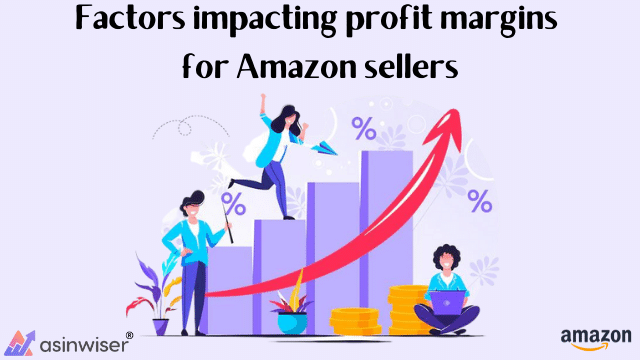
Factors impacting profit margins for Amazon sellers
Amazon sellers face an endless entanglement of fees and astounding costs, making it sometimes feel impossible to get a clear picture of a product’s or brand profitability.
Calculating a profit margin is not complex but it is considered to be one of the most important barometers of the business’s profitability which continues to be the case of an ongoing concern.
There are many factors that influence profit margins, on the other hand not all of them are measurable and for this reason they are reflected in your calculation’s variables.
However, these factors can help Amazon sellers to emphasize major factors that impact profit margins. Let’s get started.
Cost of Goods: Otherwise known as your “landing cost,” this is the cost-per-unit to manufacture, pack, and ship your product to an Amazon fulfilment centre. The strength of the competition limits how much a company can charge for its products.
Ad Spend: Ad spend is solely the amount of money you are spending on advertising campaigns. This entirely depends on how the seller spends on ads. Hence, if you know how to do it then you can easily calculate actual spending on ad placements, or you may include costs and ad operations personnel. The amount you spend on advertising should be more so that your profit margin should have 6-10%.
FBA Fees: FBA fees cover your storing, picking, packing, and shipping products automatically from Amazon. The margin impact for FBA fees is usually between 25%-40%. This fee keeps an eye as Amazon can acquire and weigh products as they adjust your fee.
Returns: As customers go through the returns process on Amazon’s website, this explains that it will deduct the price of shipping if consumers use the provided shipping label. While unavoidable, returns should only have an impact of 2%-5%. Some categories experience higher returns.
Promotions: Promotions, coupons, Lightning Deals are the important elements which can add up to your profit margin. It is recommended to keep margin impact under 5%. The most obvious, easily identifiable and broad numbers that affect your profit margin are your net profits, your sales earnings, and your merchandise costs. In total revenues and the cost of goods sold, there is a general view for these important variables.
Taxes: Taxes paid by sellers generally depend on the country in which you are selling. And also depending on if you are selling on Amazon FBA or not. Tax is an underrated variable on which sellers have very little control over. This is because taxes affect the net income of the seller.
Sales Cost: Sales cost has become a very important factor in deciding the profit margin. To increase your net profit margin by doing a good job of managing your merchandise costs, and you can increase your sales prices at the same time.
Inventory: Even though inventory is recorded as an asset on the balance sheet, you do not record sales revenues until the transaction has taken place. Underestimated inventory can hurt profit margins, and getting rid of inventory through increased sales can help profit margins.
Customer Review: Customer’s reviews are important and can turn your Amazon store into more profitable than others. As it is capable of negotiating lower prices, but they make all the bulk purchases at high volumes.
The Bottom Line
Many analysts and investors take profit margin so seriously because it can make or break a game. It includes a tremendous amount of information. It’s not clear how much profit Amazon sellers can make but the margins are significantly better. It also has no real direct competitor as a marketplace.
Having an intelligent software tool—Asinwiser—for online sellers will assist you to run your business in the right direction. Asinwiser.com is an excellent solution that will help you to target your potential audience with its all-in-one features such as brand story, product research, competitor research, profitability calculator, fba calculator and so on.
Share this:
Subscribe to Our Newsletter
Recent Post
- Top 13 Amazon Inventory Management Tools for FBA Sellers in 2023
- Asinwiser: The Ultimate OMSGuru Alternative for Amazon Sellers
- Repricer.com Alternative: Why Asinwiser is the Superior Choice for Amazon Sellers
- Aura Alternative: Why Asinwiser is the Superior Choice for Amazon Repricing
- Maximize Amazon Sales with Asinwiser: The Superior Amazon Repricer & Revenue Analytics Tool
